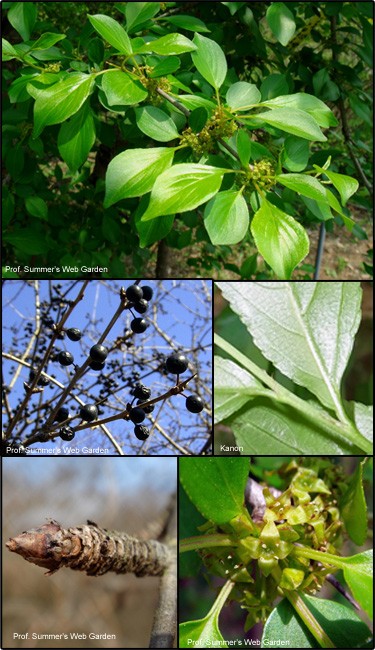Japanese buckthorn (Rhamnus japonica)
 Description:
Description: Habit: Shrub or small tree reaching a height of 6 m.
Leaves: Deciduous, opposite; petiole 5-16 mm; green on both sides, obovate - elliptic-oblanceolate or broadly oblanceolate, 2/3-7 cm., herbaceous, acute base, crenate-serrulate margins, apex acuminate, glabrous or globrate.
Stems: reddish brown to gray in color, glabrous.
Flowers: Solitary, 3-7 mm., 4 petals.
Fruit and seeds: Drupes, black in color, globose, 5-6/8 mm., 2 seeds.
Habitat: Native to Asia. Found in woodlands and disturbed sites.
Reproduction: By seed and vegetatively.
Monitoring and rapid response: Prescribed burning can be used to kill seeds and seedlings in the spring. Hand pulling and weed wrenching can also be used to remove seedlings and mature plants up to 7 cm across. Cutting will result in vigorous re-sprouts. Glyphosate can be applied immediately after cutting or via stem injections. Credits: The information provided in this factsheet was gathered from Flora of North America eFlora.
Individual species images that appear with a number in a black box are courtesy of the Bugwood.org network (http://www.invasive.org). Individual photo author credits may not be included due to the small display size of the images and subsequent difficulty of reading the provided text. All other images appear courtesy of Google (http://images.google.com).
Common Name: | Japanese buckthorn |
Scientific Name: | Rhamnus japonica |
Family: | Rhamnaceae (Buckthorn) |
Duration: | Perennial |
Habit: | Trees |
USDA Symbol: | RHJA8 |
